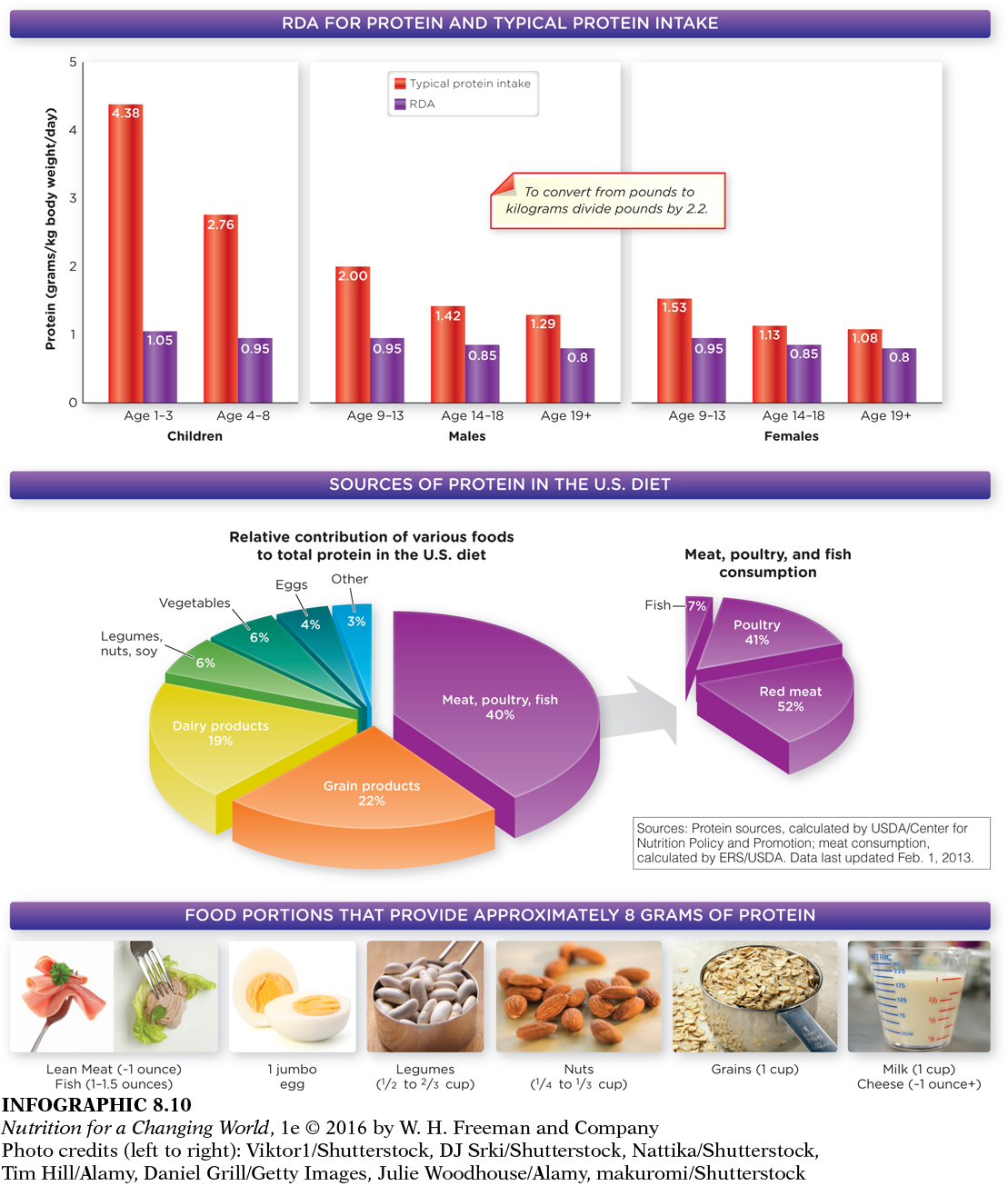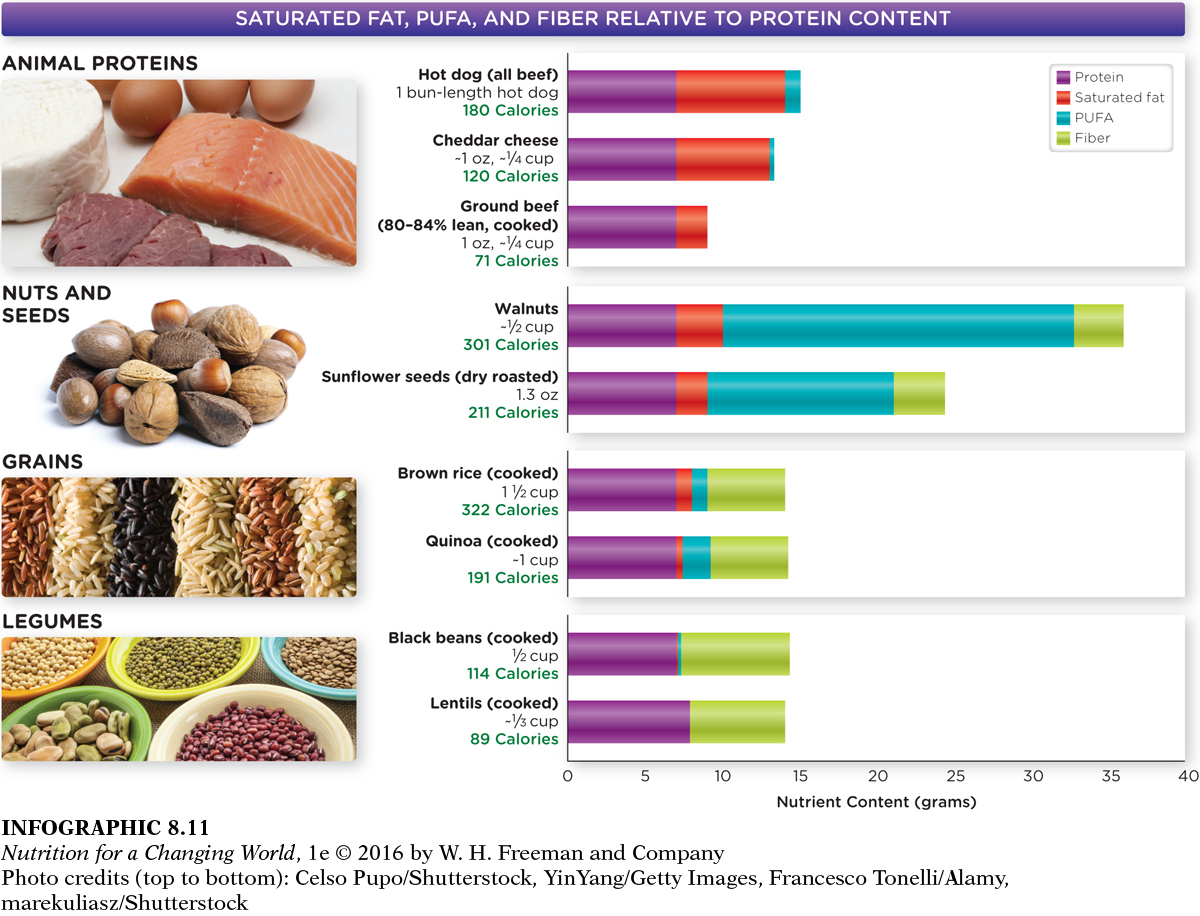PROTEIN QUALITY
More than 60% of the protein Americans consume is from animal products, such as meat and dairy foods. Combined with the protein found in plant foods, most of us exceed the RDA for protein. (INFOGRAPHIC 8.10) Adopting a more plant-

Question 8.10
 Why is the RDA for protein higher for children than it is for adults?
Why is the RDA for protein higher for children than it is for adults?
The RDA for protein is higher in children than it is for adults because they are growing, thus require more dietary protein to support protein synthesis.
PROTEIN QUALITY a measure of how well a protein meets our needs for protein synthesis; based on the proportion of essential amino acids present
When bodybuilders and Olympic athletes try to eat more protein, it’s no coincidence that many of them eat eggs. Eggs are a food with high protein quality; that is, eggs contain all of the nine essential amino acids in amounts and proportions that best support protein synthesis in the body. Animal foods (meat, fish, dairy, and eggs) provide high-

Most plant foods are incomplete proteins and they vary in the types and proportions of amino acids they contain. However, all the essential amino acids needed for protein synthesis can be supplied by consuming two or more “complementary” protein plant foods. Chapter 9 will further explore plant-
An example of protein complementation is rice and beans, which have different limiting amino acids. The amino acids methionine and cysteine are low in beans, but adequately supplied in rice. And as long as complementary protein foods are consumed within the context of an overall varied and balanced diet, they don’t even have to be eaten at the same meal. This helps explain why strict vegetarians (vegans) can still meet their protein requirements. (INFOGRAPHIC 8.11)

Question 8.11
 Which group contains the most fiber? The most PUFA?
Which group contains the most fiber? The most PUFA?
Black beans have the most fiber. Walnuts contain the most polyunsaturated fatty acids (PUFAs).